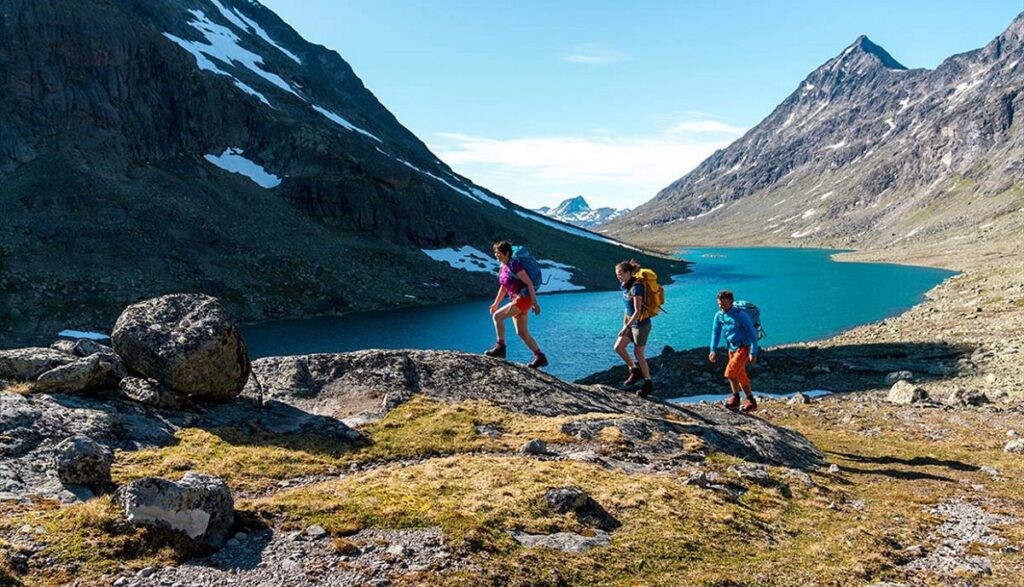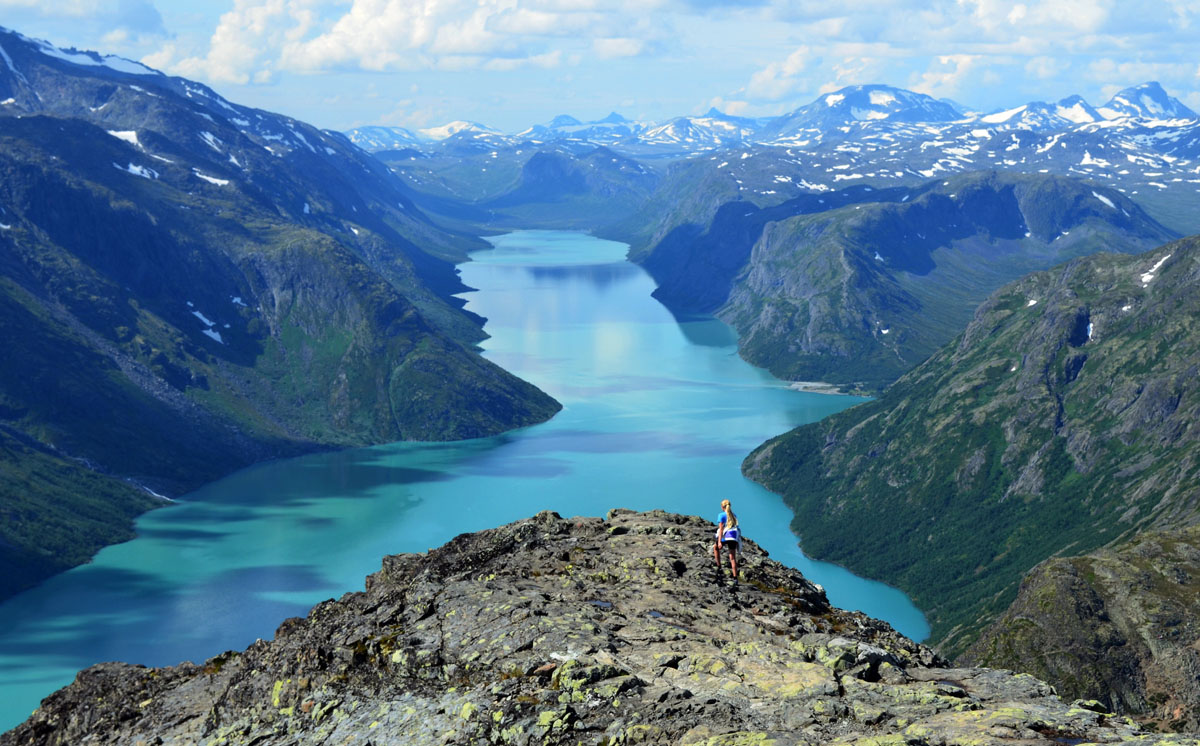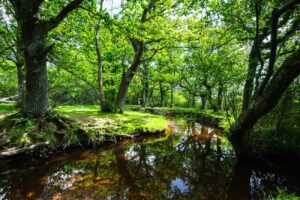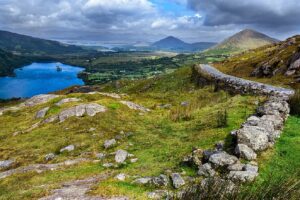Tucked deep in the heart of Norway, Jotunheimen National Park is a land where myth and majesty collide. Meaning “Home of the Giants” in Old Norse, Jotunheimen more than lives up to its name. With its soaring peaks, ancient glaciers, and untamed valleys, it feels like a world apart—a wild, awe-inspiring place that has captivated adventurers, poets, and nature lovers for centuries.
Covering around 444 square miles, Jotunheimen is home to Northern Europe’s highest mountains, including Galdhøpiggen and Glittertind. The dramatic, jagged landscape was shaped by glaciers during the last Ice Age, leaving behind sharp ridges, deep lakes, and sweeping valleys that seem almost untouched by time. Here’s our comprehensive guide to Jotunheimen National Park;
Please Download Our Mobile App here.
Overview of Jotunheimen National Park
Jotunheimen National Park is a breathtaking expanse of wilderness covering 444 square miles (1,151 square kilometers) within the larger Jotunheimen area. Home to over 250 towering peaks exceeding 6,000 feet, the park boasts Galdhøpiggen (8,100.4 feet) and Glittertind (8,087.3 feet), the two highest mountains in Northern Europe.
Carved by ancient glaciers, the landscape features dramatic ridges, sweeping valleys, and a maze of crystal-clear waterways, all sculpted from resilient gabbro rock. Among its many natural treasures are glacier-fed lakes like Gjendevatnet. Its striking emerald waters shimmer at 3,228 feet above sea level. There’s also Bessvatnet, perched even higher at 4,504 feet, offering equally mesmerizing vistas.
For visitors, the charming town of Lom serves as the perfect gateway to Jotunheimen as well as the nearby Breheimen and Reinheimen national parks. With its inviting outdoor cafés, traditional shops, and a reputation for masterful construction techniques, Lom blends cultural heritage with easy access to some of Norway’s most spectacular landscapes.
Wildlife in Jotunheimen National Park

Jotunheimen National Park is home to a diverse array of wildlife typical of Norway’s arctic and alpine regions. Among the most iconic species are reindeer, well-adapted to the cold, rugged landscape of the high mountains. In the summer months, elk and red deer venture into the upper elevations, while roe deer can occasionally be spotted along the park’s forested edges.
Predators such as lynx and the powerful, wide-ranging wolverine also inhabit the park, though they are rarely seen due to their elusive nature. Birdlife is equally rich, with Jotunheimen serving as a key habitat for birds of prey like golden eagles, gyrfalcons, and rough-legged buzzards.
Ptarmigans are commonly seen at higher altitudes, and smaller birds such as wheatears add life to the rocky slopes and meadows. The park also supports smaller mammals including lemmings, which thrive in the tundra-like terrain, and ground-dwelling birds such as grouse. Anglers are drawn to Jotunheimen’s many rivers and lakes, most of which offer excellent trout fishing.
Best Time to Visit Jotunheimen National Park
The ideal time to explore Jotunheimen National Park is during the summer months, particularly from late June to late August. During these months, the weather conditions are at their most stable and conducive to hiking, trekking, and other outdoor pursuits. Also expect longer daylight hours, clearer skies, and gentler winds making the dramatic alpine terrain more accessible. However, this is the high season which means crowds on trails.
Alternatively, early June and late September can still be rewarding for those hoping to avoid the peak crowds—provided the weather holds and snow levels are manageable. Venturing into the park during these windows can be more unpredictable, as lingering snow or sudden cold snaps may impact trails and visibility.
In contrast, winter transforms Jotunheimen into a snowy haven for ski touring and mountaineering, drawing seasoned adventurers who relish the challenge of its frozen landscape. Regardless of the season, mountain weather can shift quickly, so visitors should always come well-prepared.
Getting to Jotunheimen National Park

Getting to Jotunheimen National Park from Oslo is relatively straightforward, with several options depending on your travel preferences. One of the most popular ways is to take the Valdresekspressen bus from the Oslo City Bus Terminal. It runs several times daily and takes about four hours to reach Lake Bygdin, a key starting point for many of the park’s hikes.
In summer, local buses also provide connections from Lom to popular access points like Spiterstulen and the Juvass Cabin. Alternatively, you can opt for a train journey from Oslo to Otta, a major transport hub for the region. Here, you’ll find onward buses and connections to the park.
For those preferring to fly, Sogndal Airport is the closest airport to Jotunheimen. It’s reachable with a short flight from Oslo Gardermoen, followed by a bus or train ride into the park area. If you prefer the flexibility of having your own vehicle, driving is another excellent choice.
The E6 highway from Oslo or Lillehammer provides a direct route, while travelers from Bergen can take the E16 through Lærdal. Several of Norway’s famous National Tourist Routes also pass through the area, offering stunning views along the way and making the journey as memorable as the destination itself.
Other Activities in Jotunheimen National Park
Jotunheimen offers far more than just scenic vistas—it’s a playground for adventurers seeking solitude and challenge in a vast, unspoiled wilderness. The park’s dramatic terrain of waterfalls, rivers, glacial lakes, valleys, and snow-capped peaks creates a paradise for outdoor enthusiasts.
Visitors in summer can even enjoy snow-skiing at the Galdhøpiggen Summer Ski Center. The park is also a wonderful spot for a nature-filled hike. One of the standout trails is the Kyrkja fra Leirvassbu route. This demanding 5.7-mile trek rewards hikers with sweeping views of the surrounding mountains and a glimmering lake.
For those looking for a full-day endeavor, the Besseggen Ridge trail is the park’s most challenging route. It stretches 8 miles with a grueling 3,500-foot elevation gain but ultimately reward with its jaw-dropping ridgeline views. Galdhøpiggen, the highest peak in Norway, offers a less intense but still exhilarating experience.
Park Fees in Jotunheimen National Park

Visiting Jotunheimen is free of charge. However, some specific services and activities within the park may come with additional costs. For instance, fees may apply to parking at popular trailheads, and permits are often necessary for regulated activities such as fishing or hunting. We recommend you check the park’s official website or reach out to nearby visitor centers for the most accurate and current information.
FAQs
Is Jotunheimen National Park worth visiting?
Jotunheimen National Park is widely regarded as a destination well worth visiting, particularly for those who appreciate nature and outdoor adventure. The park is home to some of Norway’s most breathtaking scenery, featuring the country’s highest mountains, ancient glaciers, and rugged, dramatic landscapes that leave a lasting impression.
What is the best hike in Jotunheimen National Park?
The most iconic and arguably the best hike in Jotunheimen National Park is the Besseggen Ridge trail. It stretches approximately 8 miles (13 kilometers) between Memurubu and Gjendesheim. The hike challenges even seasoned trekkers with an elevation gain of over 3,500 feet (around 1,067 meters). It typically takes a full day to complete and rewards hikers with sweeping vistas of glacial lakes, jagged peaks, and Norway’s rugged highlands.
Conclusion
In a country renowned for its natural beauty, Jotunheimen stands out as a place where you truly feel the primal forces that shaped Norway. It’s a place where the mountains seem to breathe, the air tastes cleaner, and every hike feels like a journey through the land of legends.




